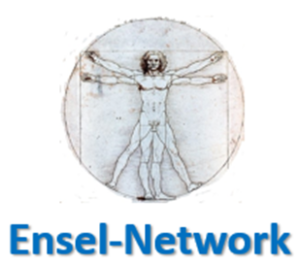The Living Art - The Art of living -EN
VIA QUERINISSIMA
by Antonio Franzina, Head, Press Office Veneto Regional Council
 Via Querinissima aspires to trace the route travelled by Pietro
Querini by sea and land to promote slow, conscious, sustainable, inclusive, food and wine cultural tourism
and aims to obtain Council
of Europe certification as an international cultural route in 2023.
Via Querinissima aspires to trace the route travelled by Pietro
Querini by sea and land to promote slow, conscious, sustainable, inclusive, food and wine cultural tourism
and aims to obtain Council
of Europe certification as an international cultural route in 2023.
Via Querinissima, from myth to history is an international non-profit cultural association that was formally established last June, after a process that began ten years ago with a bilateral friendship agreement between the Municipality of Røst (Norway) and the Municipality of Sandrigo (Vicenza, Italy), which was followed by a bilateral agreement for cultural and economic cooperation between the Region of Nordland (Norway) and the Veneto Region (Italy). The starting point for this dialogue, which was gradually extended over time to other European countries, was the voyage of Venetian nobleman and merchant Pietro Querini, who was shipwrecked and returned home unhoped for, in a rather fortunate manner, between the Mediterranean and the North Seas between 1431 and 1432.
Key points of the Querinissima:
![]() It links different peoples and
cultures, from
the Latin-Mediterranean sphere (Greece-Italy-Spain-Portugal) to the Scandinavian-Baltic sphere,
passing through German,
English, Flemish and Swiss culture.
It links different peoples and
cultures, from
the Latin-Mediterranean sphere (Greece-Italy-Spain-Portugal) to the Scandinavian-Baltic sphere,
passing through German,
English, Flemish and Swiss culture.
![]() It is the first European
cultural itinerary that also includes
a maritime route and thus revives the culture of the sea and peripheral maritime regions
It is the first European
cultural itinerary that also includes
a maritime route and thus revives the culture of the sea and peripheral maritime regions
![]() Historically, it is characterised by a strong sense of solidarity and hospitality and is attested
by autograph texts, starting with the diary of Pietro Querini kept in the Vatican Codex 5659 in the Vatican
Library, as well as Frà Mauro's splendid
Map of the World, commissioned in the mid-15th
century by the Portuguese crown and now kept in the Biblioteca Marciana in Venice,
in which we have the first cartographic description of the Scandinavian area
Historically, it is characterised by a strong sense of solidarity and hospitality and is attested
by autograph texts, starting with the diary of Pietro Querini kept in the Vatican Codex 5659 in the Vatican
Library, as well as Frà Mauro's splendid
Map of the World, commissioned in the mid-15th
century by the Portuguese crown and now kept in the Biblioteca Marciana in Venice,
in which we have the first cartographic description of the Scandinavian area
For the Council of Europe, cultural itineraries are a tool to demonstrate, through transversal and transnational routes, that the cultural heritage of different countries is actually a common heritage. They are, therefore, primarily a vehicle for communication and exchange between nations and cultures, i.e. a tool for consolidating European identity, a virtuous process of democratic re-appropriation of one's own being as a community (Becker Steinecke, 1993).
